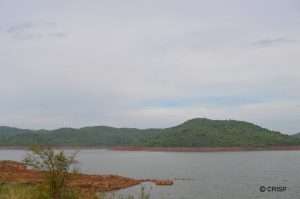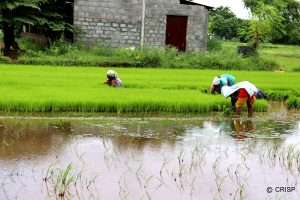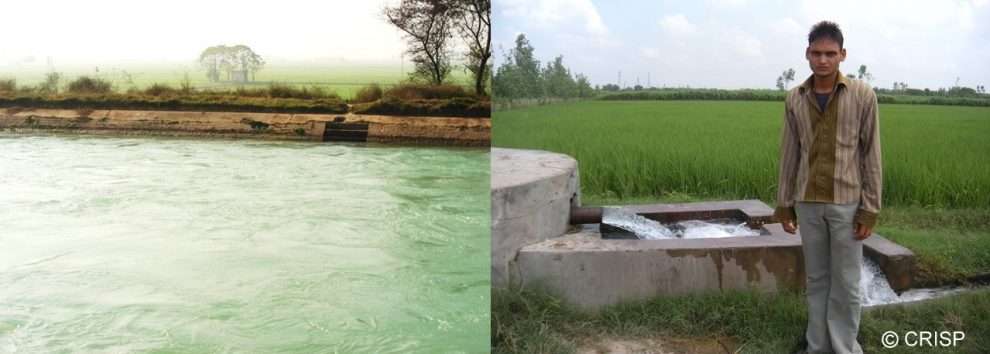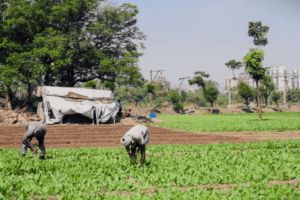Amidst the rising scarcity of water resources and sub-optimal technology adoption, institutional innovations assume a key role in sustainable water management in the agriculture sector in India. S K Srivastava and Darshnaben Mahida in this blog provides an overview of the institutional arrangements and recent community-based institutional innovations adopted by different state governments for sustainably managing water resources.
CONTEXT
India is endowed with rich water resources. Agriculture is the largest consumer of fresh water, constituting about 85% of total water use. It bears prime responsibility for sustaining the dwindling water resources (Box 1). Although modern technologies such as onsite reuse, automated canal irrigation, nano-technology infiltration, smart techniques of drip and sprinkler irrigation and artificial groundwater recharge, are available in the country for efficient water management, they are primarily restricted to laboratories or limited areas.
For instance, despite having been promoted since 1991, micro-irrigation covers only about 10% of the total irrigated area in India. Moreover, the irrigation supply through canals is inefficient and faces challenges of inequitable distribution, conflicts, inadequate utilization of water potential created and environmental externalities. Since most of these challenges are embedded in the weak institutions of technology dissemination and water resources management, institutional arrangements and effective governance play a critical role in their efficient and sustainable management and also greatly influence the welfare outcomes for the rural masses.
|
Box 1: India’s water scenario |
WATER INSTITUTIONS IN INDIA
Conceptually, institutions are defined as “humanly devised constraints that shape the human interactions” (North, D.C. 1990). Institutional arrangements help define the operational rules and regulations describing the relationship between co-users and between users and the natural resource, water in this case. The institutional structure governing water has three major dimensions, i.e., water policy, water law and water administration (Box 2).

|
Box 2: Institutional structure governing waterater |
The Indian Constitution extends a superior role to states in the management of water resources. The central government is entrusted with formulating model policies and laws, resolving inter-state water disputes and sponsoring water-related infrastructure and schemes. The final legislative power to the states often leads to legal and administrative issues such as poor integration of central and state level water policies, fragmented administrative and management power to multiple ministries and departments dealing with water, inadequate implementation of policy recommendations by the states, intractable inter-state disputes, etc.

The administrative structure of water institutions at the state level comprises of regulatory authorities, water/irrigation departments, the Panchayat Raj system and Public Works Department for the storage, supply and distribution of water. Policy formulation, administration and mobilization of water in coordination with the center are carried out by the upper level of administrative hierarchy, while implementation, monitoring and maintenance are performed by the three-tiered Panchayat Raj system in rural areas and by the district and municipalities in urban areas (Ahmed and Araral 2019). At field level, various institutions are involved in distributing the irrigation water from canal/surface water bodies/groundwater sources to the farmers’ field. These institutions are either formal institutions managed by public or local communities such as warabandi system, water users’ association, government wells, etc or informal institutions such as groundwater market, private wells, etc. These institutions are intended to ensure equity and efficiency in water distribution and usage.

Recent community-based institutional innovations
Community-based institutional innovations in water management can be seen as people coming together to address their local water-related issues. Local communities are the best guide to manage their local resources and hence, it demands awareness and empowerment among them to understand and resolve their local challenges. Experience has shown that civil society initiatives and organizations have a vital role to play in facilitating community participation. They do so by enabling the evolution and development of community-based water management models which are economically and ecologically more viable. A few recent community-led initiatives by different state governments for effectively managing scarce water resources in agriculture are presented in Table 1.
Table 1: Community-based institutional innovations for managing water resources in agriculture in different states of India.
| Place | Objective | Interventions | Outcomes |
| Maharashtra (initiated in 2017) | Desilting waterbodies to restore water storage capacity and improve percolation potential under the” “Gaalmukt Dharan and Gaalyukt Shivar” (GDGS) scheme |
|
|
| Chhattisgarh
(Uttar Bastar Kanker district) (2018) |
A water sufficient and poverty-free gram panchayat and to ensure women’s education and participatory planning in watershed management (NITI Aayog 2021) |
|
|
| Andhra Pradesh and Telangana
(2011-13) |
To bring farmers together for a sustainable model of water sharing and groundwater management by using shared networks of borewell pooling |
|
|
| Jharkhand (2017) | Installation of Solar Power Lift Irrigation System (SPLIS) through community led-co-investment (supported by Syngenta Foundation of India) to ensure higher conveyance efficiency by reducing seepage loss (CGIAR 2020) |
|
|
| Madhya Pradesh
(Betul district) (2017) |
SHG initiative to increase access to clean, reliable and cheap energy sources through portable solar powered irrigation systems (SPIS) via Custom Hiring Centers (CHCs) |
|
|
Undoubtedly, technology plays a critical role in addressing water-related issues, but water being a social good, civic participation becomes equally important to guarantee access and equity to water resources. Although existing water policies explicitly mention the involvement of local communities in water management, its adoption and performance vary greatly across regions due to various socio, cultural and political factors.
CONCLUSION
India has multi-tier and complex institutional arrangements for managing its water resources. Although their roles are clearly defined, a multitude of challenges and poor integration among the institutions often lead to sub-optimal management of scarce water resources. There is large-scale inefficiency in the distribution of irrigation water to farmers. Transferring the distribution and management of water to local communities has been recognized as a major institutional intervention in existing water policies. But the wide inter-regional variation in the adoption of community-led institutions (e.g., water users’ associations) and their performance necessitate a deep understanding of the social dynamics and community behaviour. Among others, the application of tools of behavioral experiments can be leveraged to develop and mobilize community institutions to address emerging water management issues. Further, successful models developed in different parts of the country need to be evaluated and promoted in other regions with similar agro-ecological and socio-cultural conditions.
REFERENCES
Ahmed, M. & Araral, E. 2019. Water governance in India: Evidence on water law, policy, and administration from eight Indian states. Water 11(2071). doi:10.3390/w11102071.
North, D. C. 1990. Institutions, institutional change, and economic performance, Cambridge, MA: Cambridge University press.
Saleth, R.M. & Dinar, A. 2004. The institutional economics of water: A cross-country analysis of institutions and performance. Edward Elgar Publishing, Cheltenham, UK.
NITI Aayog. 2021. Compendium of best practices in water management 2.0. Accessed on 19. 08.2022. Available at https://www.niti.gov.in/sites/default/files/2021-11/Compendium-of-Best-Practices-in-Water-Management_03-11-2021_compressed.pdf
CGIAR. 2020. Compendium on solar power irrigated systems in India. Accessed on 19. 08.2022. Available at https://cgspace.cgiar.org/handle/10568/109736.

S.K. Srivastava is Senior Scientist (Agricultural Economics) at the ICAR-National Institute of Agricultural Economics and Policy Research, New Delhi, India. (Email Id: shivendraiari@gmail.com)

Darshnaben Mahida is Senior Research Fellow (former), at the ICAR-National Institute of Agricultural Economics and Policy Research, New Delhi, India. (Email Id: darshnapmahida93@gmail.com)





Excellent Blog on institutional options, constraints and solutions to manage water resources to help farmers. How we can effectively make use of tools of behavioral experiments to leverage develop and mobilize community institutions to address water distribution issues are very well articulated and illustrated. It is rightly suggested that the successful models developed across the sites may have to be deeply studied and used appropriately to suit the needy farmers located in different regions with different ecologies and socio-cultural settings. Congratulations. Good work. Keep it up.